What size of crank arms do you need?
A few days ago we talked about the importance of the appropriate cadence, with a cheerful pedaling that avoids muscular overexertion. Intimately related to cadence is the length of the crank arms, an aspect that is usually not paid attention to and that can be decisive in achieving the perfect pedaling.
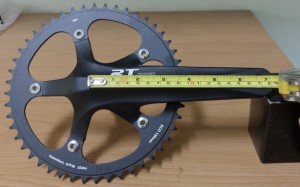
The appropriate crank arm length can be what makes you pedal perfectly
Just as we mentioned with cadence, the length of the crank arms has been a subject that sports scientists have researched and written about extensively, always in search of describing the parameters of the bike with formulas and tables applicable to everyone without reaching a definitive conclusion.
No, there is no formula that says, if you measure this much or if your leg length is such, you should use this crank arm length. Like many aspects of cycling, especially in road cycling, these recommendations come from mantras applied since the early days of this sport.
RECOMENDADO

When do helmets have to be changed? Do they have an expiration date?

Some reasons to stay away from the road in winter
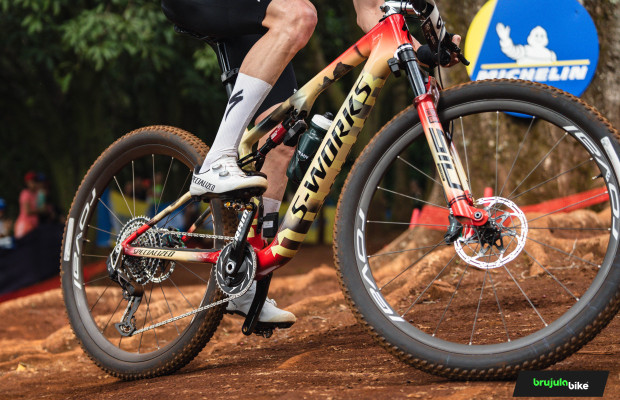
S-Works: what does it really mean and where does Specialized's most exclusive label come from?

The best apps for cycling and mountain biking

Black Friday 2025 cycling bargains: save on Garmin, POC, Maxxis and more

Black Friday Garmin 2025: the ultimate guide to choosing your GPS at the best price
Traditionally, coming from those times of inhuman gear ratios, when road bikes had chainrings of 52/42 and cassettes that did not go beyond 21, or those early days of mountain biking when bikes had triple chainrings of 48/38/28 and barely 7 cogs with a maximum of 27. In those years, obviously, pedaling cadences were much lower than current ones, especially when the road or trail inclined towards the sky.
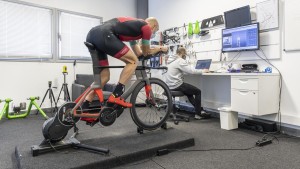
With this premise, the traditional recommendation was for tall and strong cyclists to use the longest crank arms possible to gain leverage. Meanwhile, lighter cyclists, without as much strength, opted for shorter crank arms, presumably to favor cadence since a smaller circumference theoretically means greater linear speed around it.
However, the scientific basis did not go much further than that and practical tests in the laboratory were conducted to compare the power generated by the cyclist with different crank arm lengths. It was not until the rise of biomechanics that the true influence of crank arm length on pedaling and how this measurement relates to other parameters such as setback and saddle height, cleat placement, began to be understood.
In any case, crank arm length is usually the least altered parameter and brands tend to scale it according to bike sizes, with 170 mm crank arms for small sizes, 172.5 mm for intermediate sizes, and 175 mm for larger sizes. In mountain biking, it is true that it is easier to find brands that directly mount 175 mm crank arms due to the traditional idea of greater leverage to overcome obstacles in very low cadence conditions. But it is rare to go beyond that. In essence, it is logical since these three measurements suit the vast majority of cyclists.
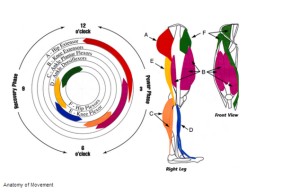
However, very tall cyclists, very short cyclists, or those with atypical body proportions: long-legged or short-legged, may need crank arm lengths that deviate from those three typical measurements, something that, fortunately, is possible to find in many brands although usually by special order or after much searching. We can also find biomechanical reasons to deviate from those standard crank arm lengths, especially in terms of achieving a power application as constant as possible throughout the entire pedal stroke.
What is normally not taken into account is that crank arm length affects how muscles apply force along the circumference, especially regarding the hip angle. Long crank arms mean that the hip angle closes when the leg is raised. With such a closed angle, the ability to apply force to extend the leg is greatly reduced.
That is why among professional cyclists it is increasingly common to see short crank arms, 170 mm or less, even in quite tall individuals. But also, short crank arms allow us to achieve a more aerodynamic position since, by flexing the hip less during pedaling, that margin can be used to add flexion in the position. This is especially relevant in time trial bikes where very short crank arms are seen.
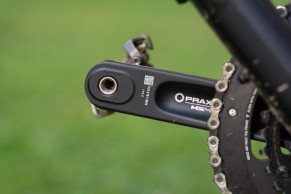
Obviously, it is not just a matter of shortening the crank arms and that's it, but it must be done in conjunction with cleat placement, setback, and saddle height. Therefore, this is something that can only be adjusted through the appropriate biomechanical analysis that examines different configurations until finding the one that generates the best performance.
On the other hand, long crank arms still make sense. Especially with an increasing number of cyclists of generous stature, especially those with long legs, who need a greater crank arm length mainly to "fit" in the pedal stroke and be able to perform the entire cycle with all joint ranges within the ideal values so that each muscle performs its function in the part of the cycle where it is needed with the greatest possible force contribution.
As you may have noticed, it is impossible to give a general recipe to recommend a crank arm length, and as always when dealing with these topics, our best recommendation is to seek the advice of a reputable biomechanist who thoroughly analyzes your pedaling form and chooses the best configuration of the different bike measurements to avoid injurious patterns and to obtain the best force contribution.